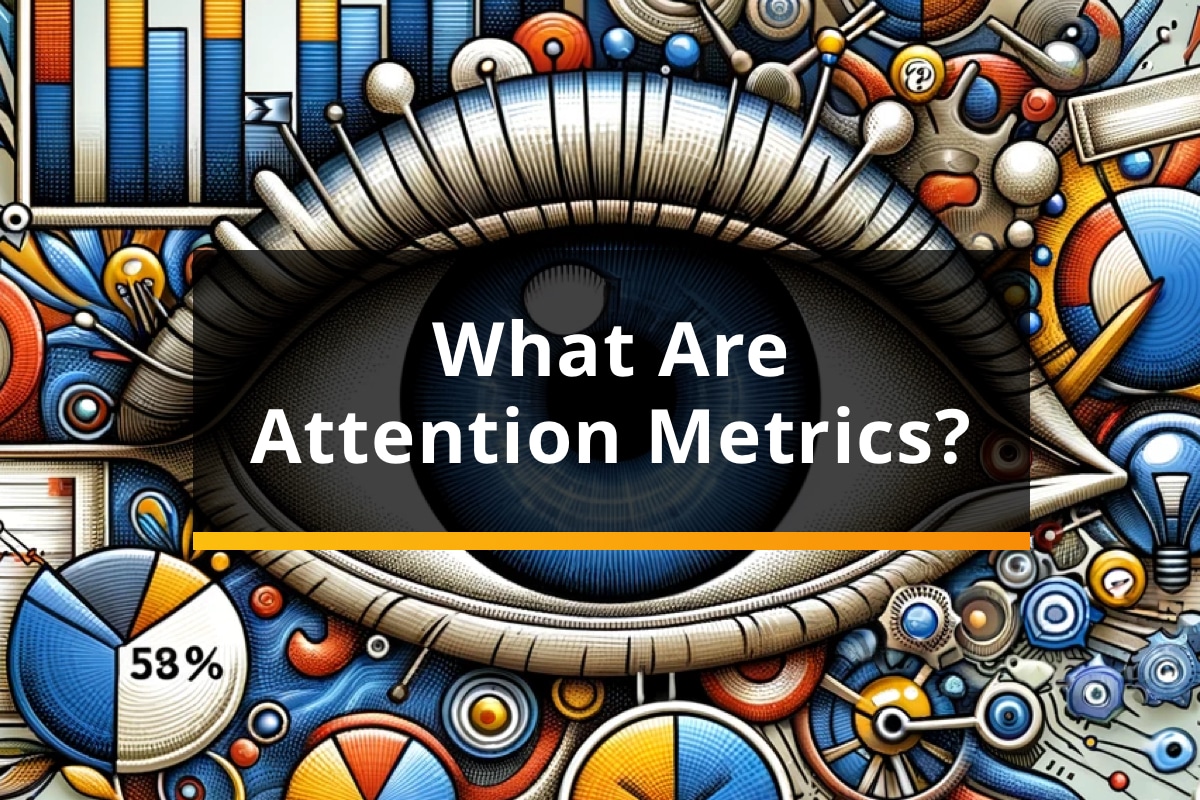
Core Takeaways:
- Attention metrics offer a deeper understanding of consumer engagement beyond traditional viewability and impressions, focusing on measuring the quality of ad placements by analyzing different types of engagement.
- The rise of attention metrics is driven by advertisers’ desire for more precise measurement tools amidst tightening privacy regulations and the need for tangible ROI, leading to a shift towards understanding media quality.
- Attention metrics, often utilizing eye-tracking data, provide insights into ad placement effectiveness, revealing unexpected trends like the significance of “beneath the fold” placements and challenging assumptions about ad visibility.
- While attention metrics offer valuable insights, their integration must be balanced within a broader marketing strategy, ensuring that the ultimate goal of driving sales remains paramount.
The quest for capturing consumers’ attention amidst a sea of modern distractions has become paramount. Advertisers, fueled by a desire for more precise measurement tools, are increasingly turning to attention metrics to gauge the effectiveness of their campaigns.
Traditionally, the metrics of success in advertising revolved around viewability and impressions – did the ad actually appear, and did anyone click on it? But, with the rise of attention metrics, advertisers are delving deeper, aiming to quantify the quality of ad placements by measuring different types of engagement.
What are Attention Metrics
Attention metrics offer advertisers a deeper understanding of consumer engagement beyond traditional metrics like viewability and impressions. Essentially, attention metrics measure the quality of ad placements by analyzing how much attention users pay to them.
Unlike mere visibility, which indicates whether an ad appeared on a screen, attention metrics delve into whether users actively engage with the ad content beyond actually clicking. This is achieved through sophisticated methodologies, often involving eye-tracking data and web-page layout analysis, which provide insights into where and how ads capture users’ attention within digital environments.
By focusing on attention metrics, advertisers can refine their campaigns to optimize ad placements for maximum impact. These metrics shed light on factors such as ad size, position on a webpage, and even the context in which the ad appears, helping advertisers understand what truly captures the attention of their target audience.
In essence, attention metrics offer a more nuanced and actionable understanding of advertising effectiveness, empowering advertisers to make informed decisions that drive engagement and ultimately enhance the return on investment (ROI) of their advertising efforts.
The Rise of Attention Metrics
Enterprises like Lumen Research and Adelaide, alongside innovators like Playground XYZ, have spearheaded the integration of attention metrics into digital campaigns. They believe that by combining eye-tracking data with website layout information, these metrics provide a nuanced understanding of how consumers interact with ads.
Two prevailing trends have spurred the adoption of attention metrics. Firstly, advertisers are scrutinizing their spending more meticulously, seeking a tangible return on investment. Secondly, with the tightening privacy landscape, traditional attribution models are losing efficacy due to limited consumer data availability. Consequently, attention metrics emerge as a reliable indicator of media quality.
Ed McElvain, EVP of digital platforms and data-driven media at Mediahub, underscores the importance of attention as a quality signal amidst dwindling consumer data access. “Attention is one of those quality signals we have considerable confidence in,” he asserts.
Deciphering Attention Metrics
As mentioned, most attention metrics leverage eye-tracking data, complemented by studies and panels, to analyze ad placements. These metrics unveil not only insights – such as the correlation between ad size and attention – but also unexpected revelations. For instance, “leaderboard” banner ads at the top of websites often receive less attention than presumed, as users overlook them due to their predictable placement.
Moreover, attention metrics illuminate the significance of “beneath the fold” placements, indicating that ads integrated within high-quality content garner heightened attention. Mike Follett, CEO of Lumen Research, underscores this, emphasizing that engagement with content correlates with increased ad visibility.
Integrating Attention into Strategies
Interest in attention metrics is burgeoning among demand-side platforms (DSPs), with companies like Lumen and Adelaide partnering with industry giants such as Amazon and The Trade Desk. Advertisers can leverage attention metrics to influence bids and optimize ad placements for maximum engagement.
However, it’s crucial to recognize that attention cannot be the sole determinant of campaign success. Marc Guldimann, CEO of Adelaide, warns against overreliance on attention metrics, stressing the importance of considering various factors within a holistic marketing strategy. Ultimately, the true measure of success lies in sales generated, with attention metrics serving as a valuable input rather than the sole focus.
Most Popular Articles

Seeing Favicons in Your Google Search Results? Here’s Why…
Have you noticed anything different in your Google Search results lately? Google added tiny favicon icons to its organic search results in January. It was…

Business Growth and Digital Marketing News & Tips 11-17-24
Are you encouraging and rewarding innovation? Lee Cockerell is the former Executive Vice President of Operations at Walt Disney World. A lover of traditional red…

Business Growth and Digital Marketing News & Tips 11-27-24
A culture of gratitude "Feeling gratitude and not expressing it is like wrapping a present and not giving it." – William Arthur Ward Beyond being…








